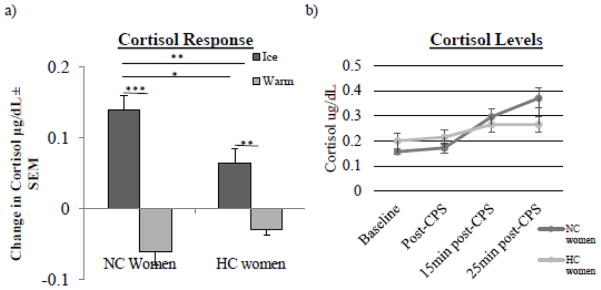Fig. 1.

Cortisol response in NC and HC women. a, Cortisol response to ice and warm conditions in NC and HC women. A 2 × 2 ANOVA revealed a significant interaction between contraceptive status (NC v. HC) and stress condition (Ice v. Warm) for cortisol response (two asterisks, p < .01). NC women in Ice (n = 30) exhibited larger cortisol responses compared to HC women in Ice (n = 25; one asterisk, p < .05) and NC women in Warm (n = 30; three asterisks, p < .001). HC women in Ice (n = 25) exhibited larger cortisol responses than HC women in Warm (n = 24; two asterisks, p < .01). b, Cortisol levels in ice condition. In the ice condition, a series of t-tests revealed that NC (n = 30) and HC (n = 25) women did not differ in their cortisol levels at any time point. Values are means ± s.e.m.
